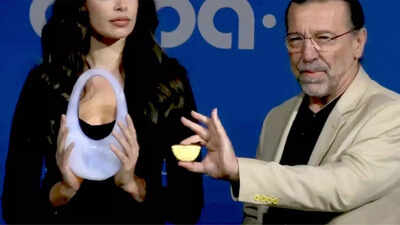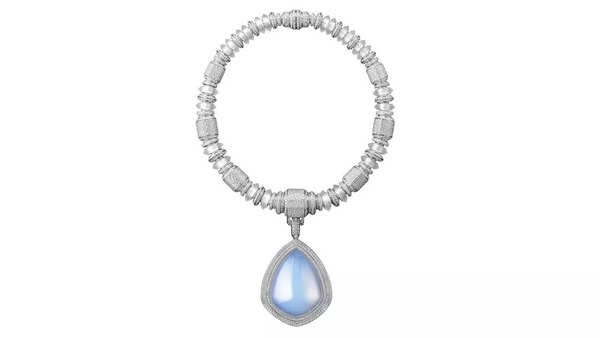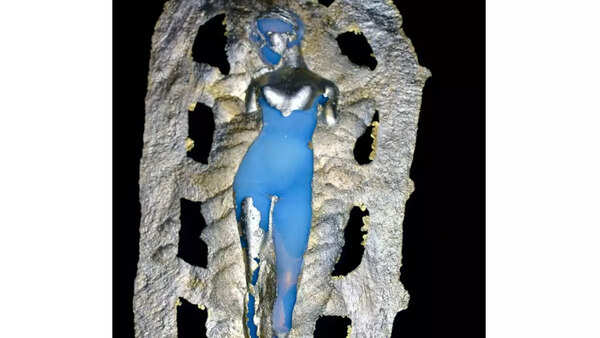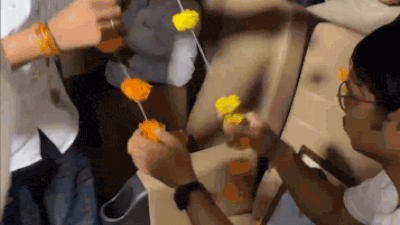NASA’s comet-catching tech inspires a fashion revolution with ‘sky in bag’ |

When people think about comets, they usually picture telescopes, dark skies, and the cold silence of space. Art nowhere comes close to the conversation surrounding space and science. Arts and fashion belong to galleries and museums while science belongs to the refrigerated laboratories. A Greek artist Ioannis Michaloudis has built a bridge between the two. He took something born in a NASA lab and turned it into a centerpiece of the fashion world. He used a delicate material once used to catch dust from a speeding comet to make glowing accessories like the “Sky in a Bag,” His creativity has redefined how we see science and arts. It’s an apex example of what can be done when space, science, technology and fashion come along.
Inspiration behind using NASA’s tech in fashion accessories
It all started with a photograph. In 1998, while working on his PhD, Michaloudis noticed something unusual in a series of sky images. One cloud curved into the shape of a hook. That tiny, fleeting form became a turning point in his life. He began to wonder if clouds could be sculpted, held, or even shaped like cubes. The sky had spoken, and he couldn’t stop listening.His curiosity led him across continents. From India to MIT, he searched for the right material to bring his vision to life. Then, in a university lab, he encountered a small and smoky-blue substance. It looked like a piece of frozen air. This was silica aerogel which is the lightest solid in the world. Holding it felt like holding sky.

The NASA material that could catch a comet
NASA first developed aerogel for a mission unlike any other. In the late 1990s, the Stardust spacecraft was sent to fly through the tail of a comet and return with samples. Scientists needed something that could gently slow down and capture particles moving at thousands of kilometers per hour. Traditional materials would have destroyed them on contact.Aerogel proved to be the answer. It was light as air, nearly invisible, but incredibly strong. After Stardust’s successful mission, NASA used it again to protect electronics on the Mars rovers Spirit and Opportunity. The same material that touched the stars now found a new purpose on Earth, that is fashion and art.
Michaloudis: An example of artistic dedication
When Michaloudis heard about Stardust, he reached out to NASA’s Jet Propulsion Laboratory. He wanted to learn everything about this magical material. At JPL, engineer Steve Jones welcomed him, showing him how aerogels are made and what they can do. The visit changed everything.With that knowledge, Michaloudis set up his own studio with a reactor ten times larger than the one he had previously used. In India, he refined the process further and discovered something extraordinary. He dipped a piece of aerogel into molten brass in which the sculpture could be destroyed. But the results were astonishing as the sculpture survived. The sky was surrounded by fire.

Art that speaks the language of the atmosphere
To Michaloudis, aerogel is more than just a material. It is a metaphor. It’s delicate, tinted blue and orange, just like the sky at dusk. It’s almost invisible, and yet it holds its shape. It disappears if mishandled, just like the fragile atmosphere it represents. “Aerogel is the sky, and the sky is in danger,” he often says.His artworks are surreal and dreamlike. They include floating nymphs trapped in blue cylinders, luminous masks, and wearable clouds in glass jewelry. Each piece tells a story of beauty and environmental urgency. His bottled “Sky Cubes” and cloudy necklaces are loved not only for their aesthetic, but for the artistic message they carry.
When the sky walked the runway with AirSwipe bag
Everything changed in 2024 when a French fashion label Coperni debuted a handbag made from aerogel, designed with Michaloudis. The “AirSwipe” bag, as it was called, was unlike anything seen before. Translucent and softly glowing, it looked like the sky had been scooped up and stitched into a purse.The internet lit up with fascination. In just two days, the bag was seen by millions, spreading across fashion blogs, news outlets, and social media. People were amazed by its look and by its origin story. This wasn’t just fashion. It was science turned into something personal and wearable. A cloud hanging to the shoulder.

A future built from clouds
Since that moment, Michaloudis has been overwhelmed with requests. People want aerogel glasses, chairs, sculptures for museums, even interior installations made from the substance that once floated behind a comet. His next big collaboration is with Mercedes-Benz, although he remains tight-lipped about the details.Looking back, he credits that turning point to Stardust, the NASA mission that made everything possible. “Without it, none of this would exist,” he says. “I am who I am today because of that little piece of sky I once held in my hands.”





